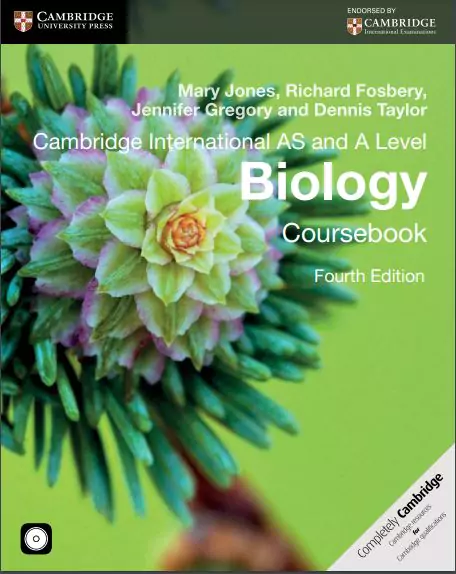‘Cambridge International AS & A Level Biology Course’ PDF Quick download link is given at the bottom of this article. You can see the PDF demo, size of the PDF, page numbers, and direct download Free PDF of ‘Cambridge International AS & A Level‘ using the download button.
Cambridge International AS And A Level Biology Book PDF Free Download

Chapter 1: Cell structure
Why cells?
A cell can be thought of as a bag in which the chemistry of life is allowed to occur, partially separated from the environment outside the cell.
The thin membrane that surrounds all cells is essential in controlling exchange between the cell and its environment.
It is a very effective barrier but also allows controlled traffic of materials across it in both directions.
The membrane is therefore described as partially permeable. If it were freely permeable, life could not exist, because the chemicals of the cell would simply mix with the surrounding chemicals by diffusion.
Cell Biology and Microscopy The study of cells has given rise to an important branch of biology known as cell biology.
Cells can now be studied by many different methods, but scientists began simply by looking at them, using various types of microscope.
There are two fundamentally different types of microscope now in use: the light microscope and the electron microscope.
Both use a form of radiation in order to create an image of the specimen being examined.
The light microscope uses light as a source of radiation, while the electron microscope uses electrons, for reasons which are discussed later.
Light microscopy
The ‘golden age’ of light microscopy could be said to be the 19th century.
Microscopes had been available since the beginning of the 17th century but, when dramatic improvements were made in the quality of glass lenses in the early 19th century, interest among scientists became widespread.
The fascination of the microscopic world that opened up in biology inspired rapid progress both in microscope design and, equally importantly, in preparing material for examination with microscopes.
This branch of biology is known as cytology. Figure 1.3 shows how the light microscope works.
By 1900, all the structures shown in Figures 1.4 and 1.5 had been discovered. Figure 1.4 shows the structure of a generalized animal cell and Figure 1.5 the structure of a generalized plant cell as seen with a light microscope.
(A generalized cell shows all the structures that are typically found in a cell.) Figure 1.6 shows some actual human cells and Figure 1.7 shows an actual plant cell taken from a leaf.
The electromagnetic spectrum
How is resolution linked with the nature of light? One of the properties of light is that it travels in waves. The length of the waves of visible light varies, ranging from about 400nm (violet light) to about 700nm (red light).
The human eye can distinguish between these different wavelengths, and in the brain the differences are converted to color differences.
(Colour is an invention of the brain!) The whole range of different wavelengths is called the electromagnetic spectrum. Visible light is only one part of this spectrum.
Figure 1.11 shows some of the parts of the electromagnetic spectrum.
The longer the waves, the lower their frequency (all the waves travel at the same speed, so imagine them passing a post: shorter waves pass at a higher frequency).
In theory, there is no limit to how short or how long the waves can be.
Wavelength changes with energy: the greater the energy, the shorter the wavelength.
Now look at Figure 1.12, which shows a mitochondrion, some very small cell organelles called ribosomes (page 15), and light of 400nm wavelength, the shortest visible wavelength.
The mitochondrion is large enough to interfere with the light waves. However, the ribosomes are far too small to have any effect on the light waves.
The general rule is that the limit of resolution is about one-half the wavelength of the radiation used to view the specimen.
In other words, if an object is any smaller than half the wavelength of the radiation used to view it, it cannot be seen separately from nearby objects.
| Author | – |
| Language | English |
| No. of Pages | 698 |
| PDF Size | 30 MB |
| Category | Biology |
| Source/Credits | wisegot.com |
Cambridge International AS And A Level Biology Book PDF Free Download
